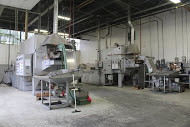 Bohne Spring offers austempering service
Bohne Spring offers austempering service
October 28, 2015 REDWIRE is news you can use from leading suppliers. Powered by FRASERS.
Posted by Bohne Spring Industries Ltd.
Bohne Spring Industries is a leading manufacturer of precision mechanical springs and wire forms. In continuous business... Read more
Subscribe
Free REDWIRE e-newsletter

Bohne Spring acquired austempering lines in 2007 for hardening and tempering spring steel. This capability comes in addition to the company’s already broad array of services for the manufacture of precision springs and wire forms.
The benefits of austempering
Austempering offers several advantages over other heat treating processes and results in stronger, more durable parts with less distortion. More specifically, the benefits include higher ductility, impact strength and wear resistance.
Austempering offers lower distortion than quench and tempering, so it can provide significant savings in manufacturing costs. In addition, switching from conventional steel components to austempered ductile iron (ADI) can provide further savings as ADI is 10 per cent less dense than steel. The result is lower casting weight, easier forming and more affordable shipping rates.
Austempering of steels above 40 RC also offers the benefit of increased resistance to hydrogen and environmental embrittlement. Bohne Spring is capable of austempering in the typical range of HRC 42-47.
The austempering process
Austempering is an isothermal heat treatment that is applied to ferrous metals. Most often the process is used when working with steel and iron. This treatment produces bainite structures in steel and ausferrite structures in iron that improve mechanical properties and reduce distortion.
Austenitizing temperatures are typically between 790 and 915 degrees C (1455 and 1680 degrees F). The chemistry of the alloy being treated determines how long the workpiece is kept at this temperature.
Quenching is then used to cool the material quickly enough to avoid pearlite formation. Typically, a high temperature salt bath is used to meet the narrow temperature range required for austempering. When compared to the conventional quench and tempering process, austempering involves keeping the workpiece at the quenching temperature for an extended period.
An expert in springs
Bohne Spring has been in business since 1891. The family owned and operated company offers a full range of services and can custom manufacture springs and wire forms to meet any need.
Contact Bohne Spring for more information.
Share
Posted by Bohne Spring Industries Ltd.
Bohne Spring Industries is a leading manufacturer of precision mechanical springs and wire forms. In continuous business... Read more
